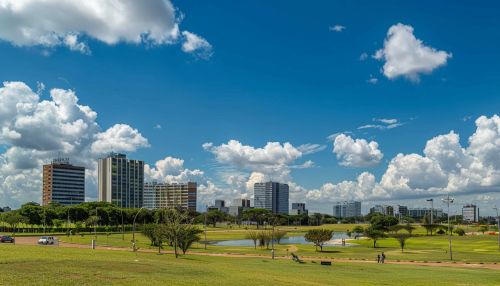Brasília
Overview
Brasília is the federal capital of Brazil and the seat of government of the Federal District. The city is located atop the Brazilian highlands in the country's central-western region. It was founded on April 21, 1960, to serve as the new national capital. Brasília is estimated to be Brazil's fourth most populous city. Among major Latin American cities, it has the highest GDP per capita.


History
Brasília's history dates back to the year 1891, when the idea of a new capital for Brazil was first suggested. The plan was to promote the interior of the country and help reduce the concentration of political and economic power in the coastal cities of Rio de Janeiro and São Paulo. The city's design, known as the "Plano Piloto," was created by Brazilian architect Oscar Niemeyer and urban planner Lucio Costa. The city's construction, led by President Juscelino Kubitschek, was completed in just four years, from 1956 to 1960, when it officially became Brazil's capital.
Geography
Brasília is located in the Central Highlands of Brazil, which significantly contributes to its unique climate. The city is surrounded by natural parks and savannah-like vegetation known as Cerrado, which is a hotspot for biodiversity. The Paranoá Lake is a large artificial lake that was built to increase the amount of water available to the city and also to increase humidity levels.
Architecture
Brasília is well known for its modernist architecture. The city's design divides it into numbered blocks as well as sectors for specified activities, such as the Hotel Sector, the Banking Sector, and the Embassy Sector. The city's architecture and urban planning are unique and have been declared a UNESCO World Heritage Site. Some of the most notable buildings in the city include the Palácio da Alvorada, the official residence of the President of Brazil, and the Congresso Nacional, which houses the Federal Senate and the Chamber of Deputies.
Economy
The economy of Brasília is mainly driven by the public sector, with the majority of the working population being employed by governmental institutions. However, in recent years, the city has seen a growth in the private sector, particularly in industries such as construction, services, and retail. Brasília also has the highest GDP per capita among major Latin American cities.
Culture
Brasília's culture is a reflection of Brazilian culture. The city is a major center for music, film, and television production. It is also home to numerous universities, libraries, and museums, including the Museu Nacional, which hosts a variety of exhibitions from artists around the world. The city's cuisine is diverse, featuring dishes from various regions of Brazil.
